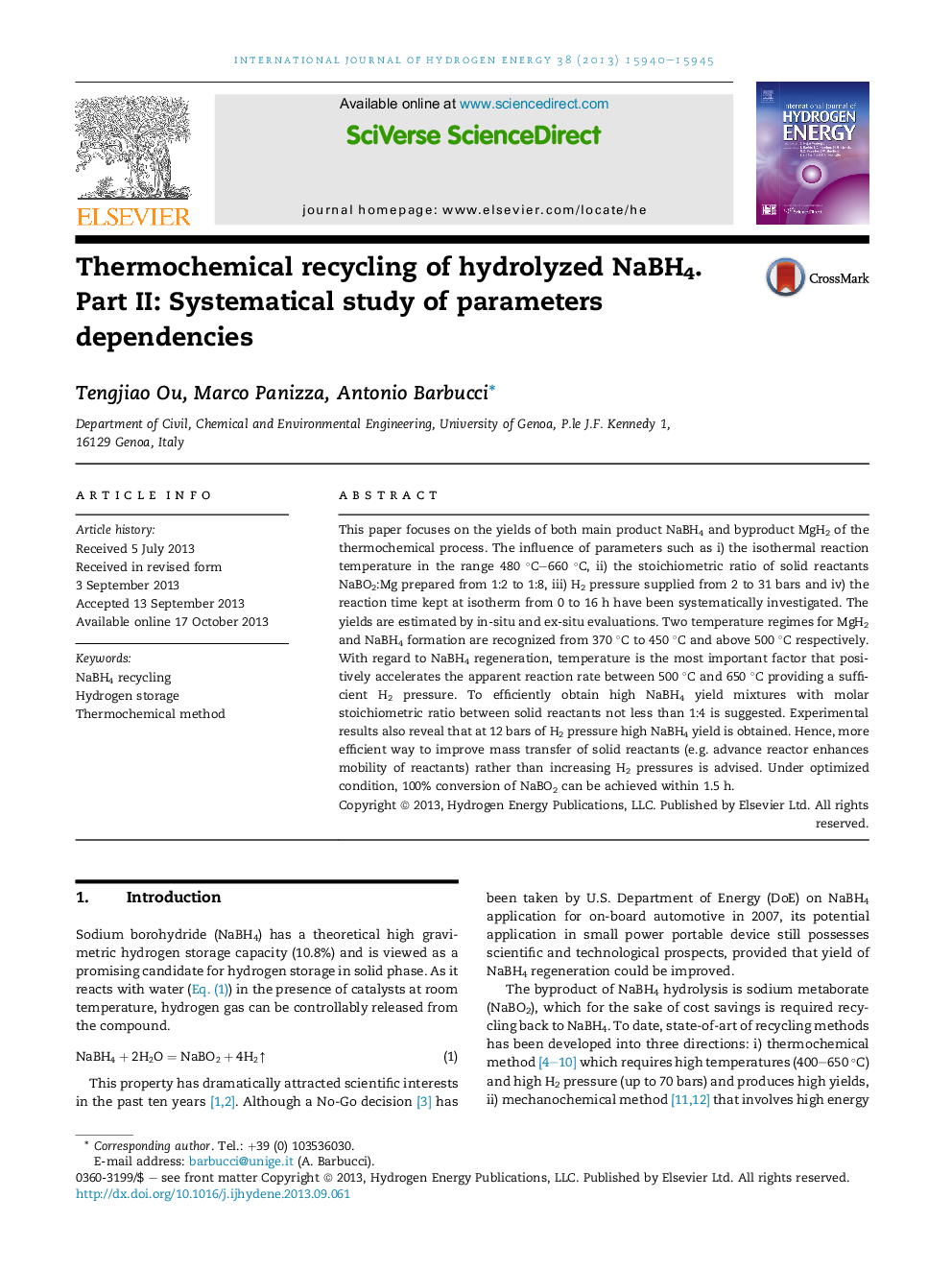| Article ID | Journal | Published Year | Pages | File Type |
|---|---|---|---|---|
| 1274154 | International Journal of Hydrogen Energy | 2013 | 6 Pages |
•Comprehensive understanding of processes by an original analysis of the data.•Combined in-situ and ex-situ analyses of NaBH4 regeneration in very good agreement.•Systematic analysis of the influence of the main parameters affecting regeneration.•Enhancement of the NaBH4 regeneration yield.
This paper focuses on the yields of both main product NaBH4 and byproduct MgH2 of the thermochemical process. The influence of parameters such as i) the isothermal reaction temperature in the range 480 °C–660 °C, ii) the stoichiometric ratio of solid reactants NaBO2:Mg prepared from 1:2 to 1:8, iii) H2 pressure supplied from 2 to 31 bars and iv) the reaction time kept at isotherm from 0 to 16 h have been systematically investigated. The yields are estimated by in-situ and ex-situ evaluations. Two temperature regimes for MgH2 and NaBH4 formation are recognized from 370 °C to 450 °C and above 500 °C respectively. With regard to NaBH4 regeneration, temperature is the most important factor that positively accelerates the apparent reaction rate between 500 °C and 650 °C providing a sufficient H2 pressure. To efficiently obtain high NaBH4 yield mixtures with molar stoichiometric ratio between solid reactants not less than 1:4 is suggested. Experimental results also reveal that at 12 bars of H2 pressure high NaBH4 yield is obtained. Hence, more efficient way to improve mass transfer of solid reactants (e.g. advance reactor enhances mobility of reactants) rather than increasing H2 pressures is advised. Under optimized condition, 100% conversion of NaBO2 can be achieved within 1.5 h.
